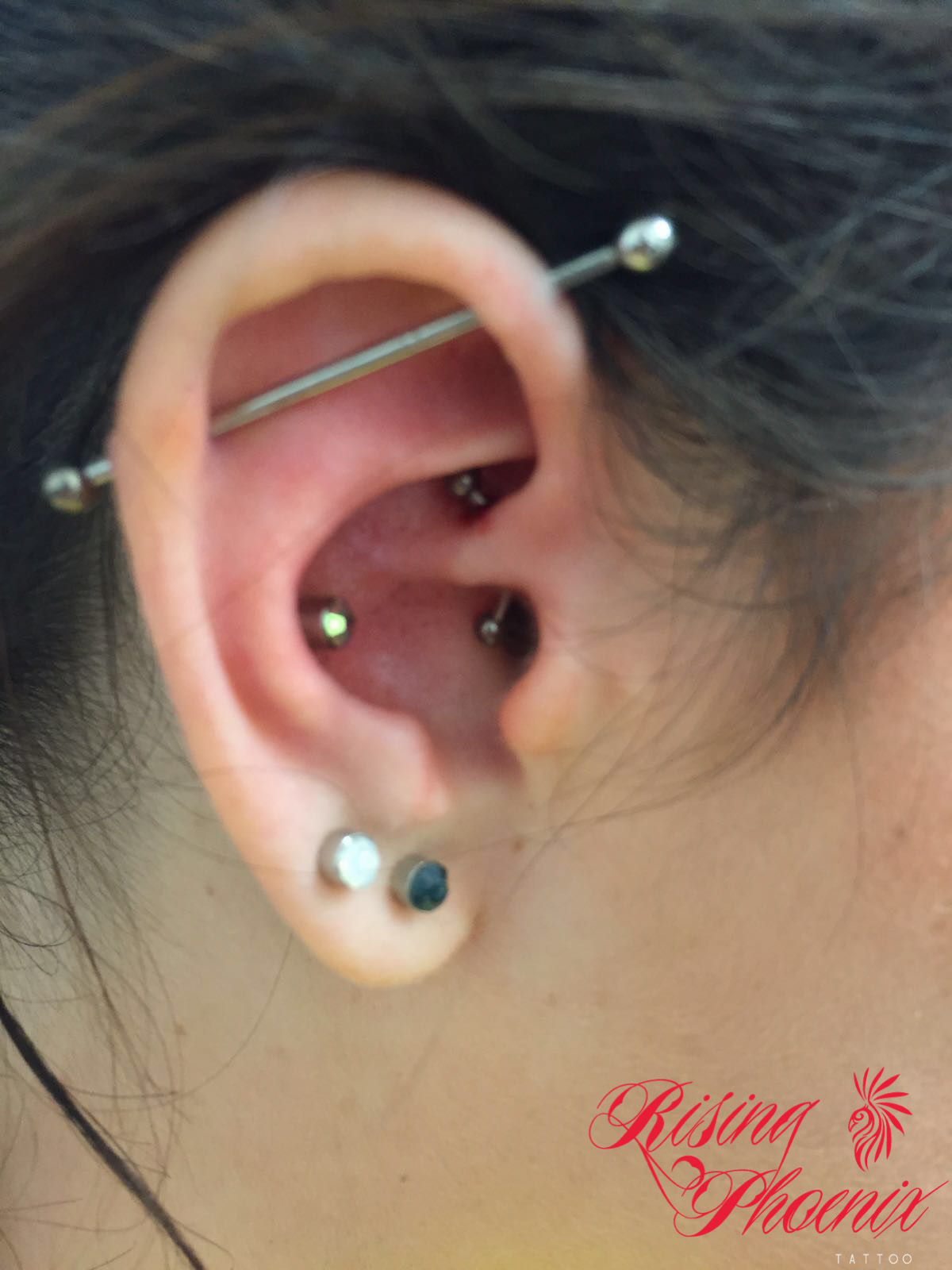

Keep in mind that it's normal for the site to feel a little swollen or sore for a few days after you get a helix piercing. Acetaminophen is a better choice than ibuprofen or aspirin, which can thin out your blood and thus cause more bleeding when you get pierced. To minimize any discomfort, you can also take an over-the-counter pain reliever 30 minutes to an hour before your appointment. You can also get double or triple forward helix piercings.īefore you get a helix piercing, Friedler recommends cleaning your entire ear thoroughly with antibacterial soap. This tends to be slightly more painful than the standard helix piercing and takes longer to heal - about six to ten months. Placement depends on the shape of the cartilage on your ear. Forward helix: Also known as an "anti-helix" piercing, this is located horizontally across from the standard helix piercing, on the cartilage at the front of the ear (closest to the face).Three piercings entail more pain than a single or double helix, but take the same amount of time to heal. Triple helix: This refers to three piercings in the upper outer cartilage - again, positioned in a vertical row.It's more painful than a single piercing but still takes three to six months to heal. Double helix: This refers to two piercings in the upper outer cartilage of the ear, usually stacked vertically with one on top of the other.It takes about three to six months to heal. This piercing is more painful than an earlobe piercing but less so than other helix piercings. Standard single helix piercing: Located in the upper outer cartilage, near the rim of the ear.Here's what to expect from each, according to Susan Massick, MD, a board-certified dermatologist at The Ohio State University Wexner Medical Center. There are several types of helix piercings to choose from, each of which is in different locations on the ear. Here's what dermatologists want you to know before getting a helix piercing.
#Helix scaffold piercing skin#
Additionally, Friedler says helix and other cartilage piercings come with a higher risk of keloids - thick raised scars caused by excess collagen in the skin during healing.Īll that said, you can reduce your chances of these complications by taking certain precautions beforehand and ensuring proper aftercare during the healing process. Less blood flow means the wound heals more slowly, making it more prone to infection. While helix piercings offer a fun way to adorn your ears with different styles of jewelry, a 2021 study also found that cartilage piercings come with one of the highest rates of infection of any body piercings.Īccording to Suzanne Friedler, MD, a board-certified dermatologist at Advanced Dermatology in New York City, this is because cartilage tissue gets less blood flow than the fleshy, fatty lobe. Specifically, the helix piercing - which is made on the upper or outer cartilage of the ear - has become an increasingly trendy choice, thanks to celebs like Miley Cyrus, Scarlett Johansson, Jennifer Aniston, Timothée Chalamet, and Rihanna. It can be tempting to try to save money and time, but it is not worth it when it comes to the organ you need for speaking and tasting.While traditional ear piercings happen on the lobes, piercings on other parts of the ear have surged in popularity in recent years. Take this as a sign that you really shouldn't pierce your own tongue.

Look at the mark from all angles and make sure that it's in the exact place you want it. If you're piercing your ears, make sure that they're symmetrical. Use a pen to draw a little dot where you want your piercing to go, making sure you choose the spot where it will look best. Mark your skin where you want your piercing.


 0 kommentar(er)
0 kommentar(er)
